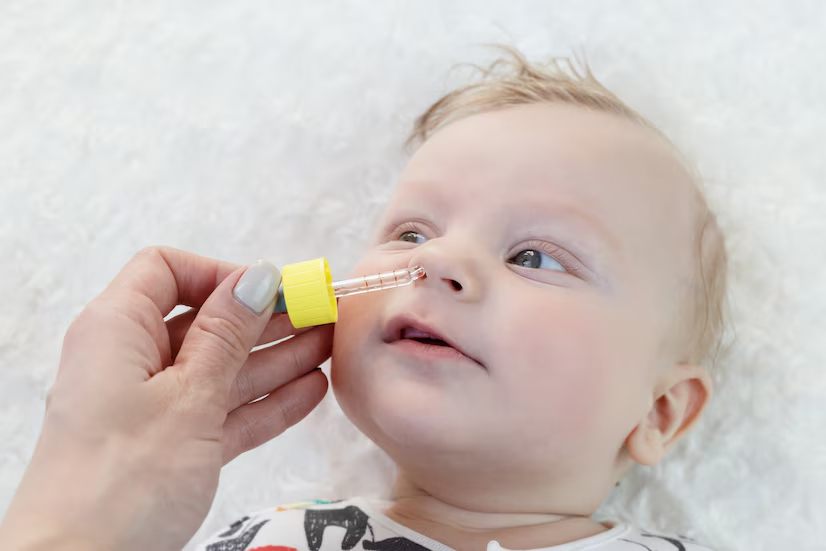
A stuffy nose in children is a common, uncomfortable issue, often arising from colds, allergies, or minor infections. While it's generally harmless, congestion can disrupt sleep and feedings, especially in infants. Fortunately, several safe, natural remedies can help ease the congestion and clear your child’s nasal passages without needing medication. Here, we explore some effective approaches backed by research and medical recommendations.
Table of Content:-
1. Saline Nasal Drops or Spray

Saline solutions are one of the simplest and most effective ways to relieve nasal congestion in children. Saline drops work by thinning the mucus in the nasal passages, making it easier to clear out. In infants, a few drops in each nostril, followed by gentle suctioning with a bulb syringe, can provide quick relief.
A study published in The Journal of Pediatric Otorhinolaryngology found that saline nasal irrigation is effective in reducing nasal congestion symptoms in children under five, without any harmful side effects. It’s a gentle approach that can be used several times a day, especially before feedings and sleep, to keep nasal passages clear.
2. Warm Baths and Steam Therapy

Steam can loosen mucus and reduce inflammation in the nasal passages, offering relief from congestion. A warm bath creates a mild steam that helps in thinning mucus, and the warm water can relax the child’s body, promoting better sleep.
According to a study in the Journal of Asthma, steam inhalation can help reduce symptoms of upper respiratory tract infections, including congestion, by moisturising and loosening mucus. To safely create steam for your child, sit in the bathroom with the shower running on hot for a few minutes, then turn it off and allow the child to breathe in the humid air. This method can help provide short-term relief from a stuffy nose.
3. Using a Humidifier
Dry air can worsen nasal congestion by drying out the mucus, making it harder for children to breathe comfortably. A cool-mist humidifier in your child’s room adds moisture to the air, which keeps nasal passages from becoming too dry, allowing mucus to flow more freely.
Research published in Pediatric Pulmonology highlights the role of humidified air in reducing nasal inflammation and improving overall respiratory health in young children, especially in dry climates or heated rooms in the winter. Make sure to clean the humidifier regularly to avoid mold or bacteria buildup, which could aggravate respiratory symptoms.
4. Elevating the Head

While this remedy may seem simple, keeping a child’s head slightly elevated while sleeping can help reduce nasal congestion. In infants and young children who cannot use pillows safely, this can be done by slightly raising the head of the mattress or using a wedge. Elevation can help mucus drain naturally, making it easier for children to breathe through their noses.
Though there isn’t a direct study on elevation and congestion relief in infants, healthcare providers commonly recommend it as a safe and supportive way to encourage better breathing during sleep.
Precautions When Using Natural Remedies
While these remedies are generally safe, always keep a few precautions in mind:
- Avoid Essential Oils: Strong-smelling essential oils, while natural, can irritate sensitive airways in young children and are not recommended for infants.
- Monitor Humidity Levels: When using a humidifier, ensure the room isn’t too humid, as excessive moisture can encourage mould growth.
- Consult Your Paediatrician: For persistent congestion or if your child has other symptoms like fever or a persistent cough, consult a healthcare provider.
Conclusion
Natural remedies can provide effective, safe relief from nasal congestion in children, helping them breathe easier and rest better. From simple saline sprays to using a humidifier, these approaches have a good track record in managing congestion and are often recommended by paediatricians. However, it’s essential to monitor the child's symptoms and seek medical advice if there is no improvement, ensuring they get the best care possible for a quick recovery.
Also watch this video
How we keep this article up to date:
We work with experts and keep a close eye on the latest in health and wellness. Whenever there is a new research or helpful information, we update our articles with accurate and useful advice.
Current Version